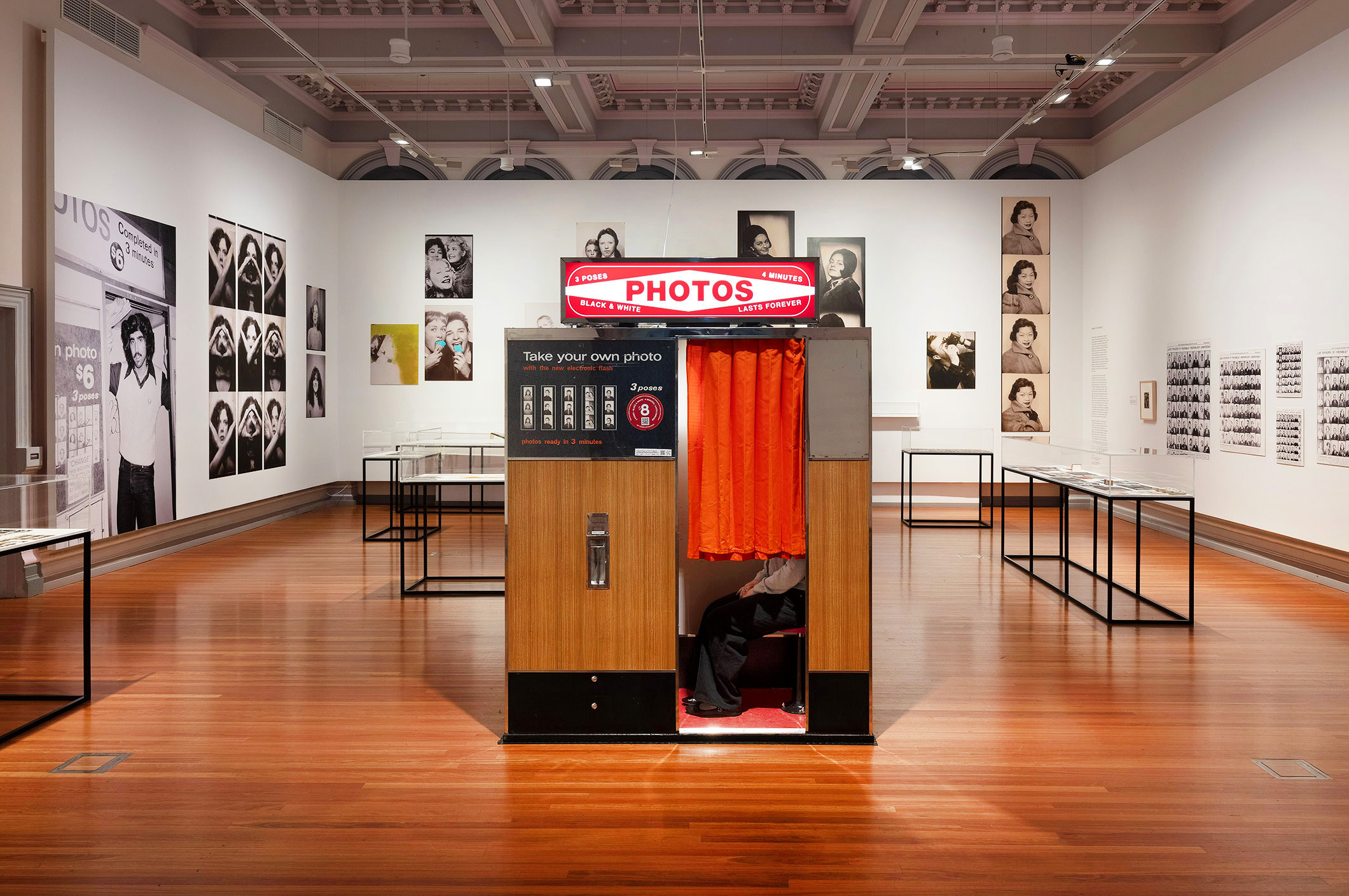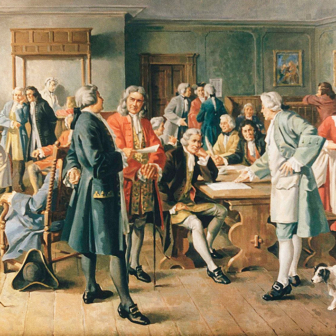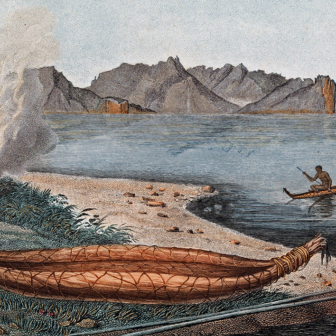Alan Adler, who died earlier this year at the age of ninety-three, was for more than fifty years the owner and operator of a series of photobooths across Melbourne. In addition to keeping the booths stocked with the required paper and chemicals and generally making sure they did what they were supposed to do, Adler spent countless hours driving around the city and suburbs dealing with the predations of drunks, vandals and the merely clumsy or careless, repairing broken parts and introducing any number of hacks and minor improvements.
Over the decades he continued to put his own stamp on the booths, blurring step by step the distinction between the man and his machines. And then, in 2018, the best-known and most popular of the booths, centrally located at Flinders Street station, suffered near-death by bureaucracy. It was saved from removal by a public campaign prompted by a young couple, Jessie Norman and her partner Christopher Sutherland, who were passing by the booth on their first date and had stopped for a photo.
“Chris and I saw the small, handwritten note on the side of the machine, saying the booth was to be removed,” Norman recalls. “Chris rang Alan and took photos of him the day after. He posted a plea on Facebook, and it went viral.”
“Going viral” led not only to a reprieve for the Flinders Street photobooth but also to Sutherland and Norman’s decision to take over operating the remaining machines following Adler’s retirement, and in doing so to renew public interest in the unique photographic experience offered by the photobooth.
As he went about his tasks of servicing and maintaining the booths, Alan Adler adopted the habit of making a test strip of himself, just to make sure that everything was indeed working as it should. Many of these images survived, squirrelled away by Adler and his wife Lorraine and now brought back into the light as Auto-Photo: A Life in Portraits, firstly in book form, published in association with the Centre for Contemporary Photography in Melbourne, and now as an exhibition developed by the CCP, currently on show at the RMIT Gallery.

Man and machine: a selection of Alan Adler’s test strips from the book version of Auto-Photo: A Life in Portraits.
This is a resonant year in which to stage the exhibition, marking as it does the centenary of the booth’s invention by Russian Jewish immigrant Anatol Josepho. What was then called the photomaton, though it was in all practical respects what we now call a photobooth, was patented in 1925 and began commercial operation in New York in 1926. As so often with inventions that seem to come from nowhere, the photomaton had its predecessors, but Josepho’s version, as well as offering an efficient process and the prospect of commercial viability, had the huge advantage of being able to produce not just a single image but a sequence.
The fact that a photobooth produces a strip of images — originally eight, now down to three in most cases — is one of the keys to its enduring fascination. There is something about being able to detect the variations, often slight, between one portrait and another taken moments later that holds the viewer’s attention. The strip appears in the hand like a tiny sample of frames from a film — as a slice of life, so to speak.
This connection between photobooth portraits and cinema is made explicit in the final display room of the exhibition, where the hour-long film A Century of Photobooths in Cinema (2025) is screened on repeat. Made by Brian Meacham, one of the founders of the celebratory website photobooth.net, it consists of sequences from feature-length films in which the photobooth, and the photobooth experience, play a significant part.
The film that most people remember is Jean-Pierre Jeunet’s Amélie (2001), in which photostrips form an essential component of the plot. Amélie follows in the footsteps of several classic French films that employ the trope of the photobooth in one way or another, including Carné’s Le Jour se Lève (1930), Jacques Becker’s Antoine and Antoinette (1947) and Godard’s Masculin, Féminin (1966).
Photobooth.net lists several hundred films that reference photobooths, and the list keeps growing as contributors write in with examples. Its extent reflects how the photobooth has had an impact on the wider culture much greater than the relatively small part it has played in the history of photography. The extent of its cultural impact is further underlined in the exhibition by examples of artworks, both local and international, based on the special character of photobooth portraiture.
Since it was first patented a century ago, this machine for making images without the need for a human operator has produced a particularly recognisable kind of photographic portrait. We know one when we see one.
Photobooth enthusiasts are keen to emphasise this unique character. At the conclusion of the grandly titled International Photobooth Convention, held in London in the summer of 2023, attendees agreed to “officially recognise and affirm the spelling of ‘photobooth’ as a single, cohesive word, without a space.” The decision to come down on the side of “spacelessness” was unanimous.
The organisers, who included Brian Meacham and his fellow photobooth.net founder Tim Garrett, later issued a press release in which, combining humour with underlying seriousness, or perhaps seriousness with underlying humour, they expanded on the logic behind the unanimity. “The absence of a space in ‘photobooth’ better represents the integrated and seamless experience that photobooths offer,” they explained.
Whereas the photo booth, spelled with a space, is a metal box containing moving parts, the spaceless spelling signifies a cultural phenomenon. The London convention concluded by noting that further work would need to be done on the related question of whether the approved spelling should be photo strip or photostrip. A decision is expected at the next gathering of the convention, to be held in New York in August. The outcome is not difficult to guess.
Meanwhile, the exhibition at RMIT Gallery achieves a satisfying balance between the aesthetic appeal of many of these photobooth portraits and the practicalities of how the images are made, a balance between aesthetics and mechanics. Sometimes these two aspects may even combine, as can be seen in the display of a cross section of the inner workings of a photobooth, framed behind a glass panel in the manner of a gallery installation.

The magic within: a diagram from Auto-Photo Company’s 1958 user manual. A&A Studios
The photobooth portrait is, as many have noticed, a kind of proto selfie, one that is largely free of the overlay of irony and knowingness so characteristic of that more recent genre. What the photobooth portrait and the selfie do have in common is the absence of a third party: the machine (the camera in the photobooth or the camera in the phone) and the sitter, between them, take on the role of photographer.
Together, they become the artistic eye that frames the image, to the point where it can be difficult to think of the photobooth as a mere machine. “Sometimes there’s a bit of an interaction between the machine and me,” Adler muses in a video interview, uncharacteristically metaphysical for a moment. “It’s a bit of a relationship.”
This ability of the sitter to assume much of the control typically exercised by the photographer would seem, theoretically, to open all manner of creative opportunities for presenting oneself to the world. Ostensibly unmediated, the subject can appear just as they would wish to appear. Hidden inside the booth, you can, in the words of Näkki Goranin, author of American Photobooth (2008), “be anyone you want to be.”
In fact, as anyone will know who has caught their first glimpse of the photostrip as it emerges from the dispensing slot, this sense of control, of being who you want to be, is for the most part illusory. We don’t really know how we will look in the image the machine has just made of us. Something about sitting there, on an uncomfortable stool or bench, either alone or with a companion — staring at the lens, unsure of when the exact moment will come when the shutter clicks — creates a mood of uncertainty.
Sometimes this uncertainty is apparent on the strip of images. Just as often it is disguised by the bravado of exaggerated expressions and funny faces. The photobooth, dark and curtained off, unfamiliar and a bit unsettling, encourages the urge to perform. It “triggers creativity as if on a dare,” as photographer and collector Patrick Pound puts it in his thoughtful introduction to the book.
The many, many images of Alan Adler that make up the bulk of Auto-Photo: A Life in Portraits appear both as an overwhelming mass and yet as oddly singular and intimate. Whole walls are taken up by mounted photostrips of Adler, sometimes looking deliberately serious, at other times mugging wildly. In many of the images he has his eyes closed.
He later seemed to describe the eye-closing as intentional, a way of minimising any potential damage caused by repeated exposure to the flash. “But then I’ve just had cataracts replaced when I was ninety-one. So, I couldn’t have done too much damage.” In almost the same breath, he suggests he was merely doing what many people do, misjudging his timing and closing his eyes at just the wrong moment. “A lot of [the strips] I just threw away because I shut my eyes.”
These comments come from a roundtable discussion, transcribed in the book, in which Adler, Jessie Norman, Christopher Sutherland and the exhibition curator and author of a detailed essay on the history of the photobooth, Catlin Langford, range over Adler’s more than fifty-year career and its significance.
Adler himself is at pains to downplay any significance, clearly concerned to emphasise the practicalities and to resist any temptation to theorise or speculate. His determination to be practical does nonetheless have a way of getting to the heart of the matter. On his brief flirtation with colour (“they stopped making the paper”), Adler is philosophical. “The black-and-white was always more popular than colour,” he says.
The colour versions of himself in the exhibition suggest why that might be so. It is not simply because monochrome is part of the general retro appeal of photobooth photography. Indeed, it is striking how much more retro — that is, of their time — the colour images now look, thanks largely to the fading, “fugitive” nature of the dyes used in the development process. The black-and-white portraits, by contrast, appear much more alive, less time-bound.
The process that goes to make a photobooth portrait, while technically complicated, is not so complicated from the sitter’s point of view. In the four minutes or so that it takes for the final images to appear, a lot happens, mechanically, behind the scenes. But for the sitter, there is no fuss, no process as such. “It’s not like going to a professional photographer who says… smile this way,” Adler explains. “It is pictures of people having a good time.”
Alan Adler’s self-portraits dominate the exhibition space, but there is plenty of room for other faces, both from the past and the present day. There are examples of people who have marked important occasions in their lives with the ritual of an auto-photo, of friendships maintained and celebrated by means of an annual portrait taken at the Flinders Street booth. Taken at intervals over a period of years and sometimes of decades, the photobooth portrait reflects the nature of the photostrip itself, capturing both continuity and change in a succession of similar but subtly different images.
The RMIT exhibition tells the story of one man and his entrepreneurial love affair with the photobooth while also documenting the wider cultural impact of this very recognisable category of mechanically produced image. Photobooths survive and continue to operate in many cities around the world, but this story of survival rather elides the fact that most of them went digital several decades ago.
The exhibition tells us that only about 200 working analogue or chemical photobooths remain. Of these, six are in Melbourne, operated by Alan Adler’s successors, Sutherland and Norman, under the name metro.auto.photo. Combining analogue and digital processes in an effort to prolong the life and profile of this once-influential medium, the new owners’ Instagram account invites people to upload their photobooth portraits. •
Auto-Photo: A Life in Portraits
Edited by Catlin Langford | Perimeter | $48 | 256 pages
Auto-Photo: A Life in Portraits
Curated by Catlin Langford with Christopher Sutherland and Jessie Norman | Centre for Contemporary Photography | RMIT Gallery until 16 August 2025




